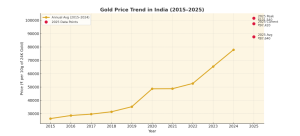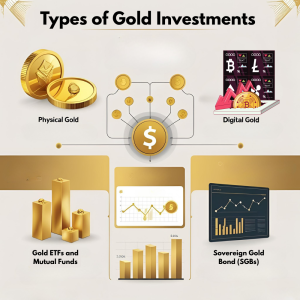
In uncertain times, investors seek out stable assets to safeguard their wealth. One asset that consistently stands out during geopolitical turmoil is gold. From conflicts in regions like Ukraine and the Middle East to rising global tensions, gold continues to draw attention for its historical role as a safe haven during crises.
But what makes gold such a reliable investment during war? And why does it often outperform during periods of instability?
Let’s explore how armed conflicts impact gold prices and why gold remains a preferred choice for investors in uncertain times.
Unlike traditional investments like stocks and bonds, gold doesn’t rely on corporate performance or economic growth. Its value is rooted in scarcity, global demand, and centuries-old trust as a store of value. When wars break out, investors tend to pull capital from riskier markets and shift toward more stable options — and gold typically tops that list.
Gold has long been viewed as a hedge against inflation, currency depreciation, and economic downturns — conditions that often accompany or follow large-scale conflicts.
1. Fear and Market Instability
Armed conflicts introduce volatility in global financial markets. Stock prices become erratic, bond yields swing, and currencies weaken. Investor sentiment is driven by uncertainty and fear, prompting a shift toward safer, more reliable assets like gold.
2. Currency Devaluation
Governments involved in prolonged wars often resort to increased public spending. To fund military efforts, central banks may print more money — leading to inflation and weakening the domestic currency. This decrease in purchasing power tends to drive demand for tangible assets like gold.
3. Inflation and Economic Slowdown
Wars often strain economies. Rising costs of goods and services, disrupted supply chains, and job market instability can all contribute to inflation or even recession. In such economic climates, gold often acts as a protective buffer, maintaining its value while other assets decline.

Historical data shows a strong correlation between war and rising gold prices. Some notable examples include:
In nearly every case, gold demonstrated resilience and upward movement amid global unrest.
Gold tends to do well during war not just because of fear, but because of the macroeconomic effects wars have on nations:
These conditions make gold more attractive to investors looking for long-term protection and stability.
While war is a major factor, it’s not the only one impacting gold prices. Other contributing elements include:
The 2008 global economic crisis, for instance, saw gold rise even in the absence of major geopolitical war — highlighting its versatility as a financial hedge.
While gold’s track record during war is strong, not every conflict results in a price rally. Localized or brief conflicts may not impact global gold markets significantly. However, when major economies or vital regions are involved, the ripple effects are usually global, driving increased gold demand.
The severity and duration of the war also matter. Prolonged wars typically exert more sustained upward pressure on gold than short-lived skirmishes.

Gold can play a valuable role in portfolio diversification, especially during uncertain times. Financial advisors often recommend allocating around 10% of your portfolio to gold, depending on your goals and risk tolerance.
Investment options include:
No matter the format, gold’s function remains the same: wealth preservation during volatility.
In times of war, uncertainty, and economic upheaval, gold often stands high as a symbol of financial security. While no investment is entirely without risk, gold has repeatedly proven its value as a strategic hedge and a dependable asset in turbulent times.
Understanding the link between global events and financial markets is essential. For those looking to navigate such volatility smartly, gold offers a historically tested solution for preserving value — when the world feels most uncertain.
2 Comments
hemangi
informative blog
Benjamin
i agree